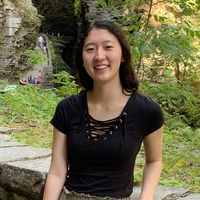Prognostic Liquid Biopsy Biomarkers in Glioblastoma
Glioblastoma (GBM) is a grade IV glioma, the most common and aggressive form of malignant brain tumors, and it has a poor treatment response. As a result, patients tend not to live very long and the median overall survival is 14 months. Currently, tissue biopsies are the gold-standard technique for GBM diagnosis and prognosis. However, they are invasive and limit analysis to a single point in time, making it difficult to monitor tumor evolution. In contrast to tissue biopsies, liquid biopsies are non-invasive and can be repeated. The circulating biomarkers collected from liquid biopsies can be analyzed to enable monitoring of tumor growth and response to treatment. In GBM, these biomarkers include circulating tumor cells, cell-free nucleic acids, proteins, and extracellular vesicles. Because there are currently no approved prognostic circulating biomarkers for GBM, the goal of my project was to write a literature review overviewing the recent findings on candidate circulating prognostic biomarkers for GBM.
Through this experience, I have learned to filter and find relevant articles through the databases PubMed and Google Scholar, understand and interpret graphs and statistical models, and analyze and think critically about the findings and implications. After identifying 10 important articles in the field, I created a table to report their major findings while categorizing them by type of liquid biopsy and type of biomarker.
I have also learned the process of treating a cancer patient, which is something I was particularly interested in as a pre-med student before this research experience. Through instruction by my mentors in the Carpenter Lab as well as reading numerous articles on GBM, I have learned how clinicians diagnose GBM, the different types of treatments based on the patients’ conditions, the different types of responses, and the adjustments and changes to the treatments based on patients’ responses.
This experience has made me more interested in clinical research and excited to continue working at the Liquid Biopsy Core to learn some hands-on techniques to identify and analyze circulating biomarkers in GBM. I am grateful to Dr. Bagley and Dr. Carpenter for this opportunity and to Dr. Till and Ms. Abdalla for their guidance. I would also like to thank the Penn Undergraduate Research Mentoring (PURM) Program for supporting me this summer.

Comments
Valuable resource for learning about the state of the field
It seems like circulating liquid biomarkers could be revolutionary in the diagnosis and prognosis of GBM, and your literature review (and table) will be really enlightening for anyone who wants to know more about how this technology has progressed. You did a really great job of presenting the trade-off between noninvasiveness and ease of detection, among other critical factors to the viability of prognostic circulating biomarkers for GBM. It would be interesting to hear more about the specific candidate biomarkers in layman's terms, though of course there is limited space in both the poster and video.